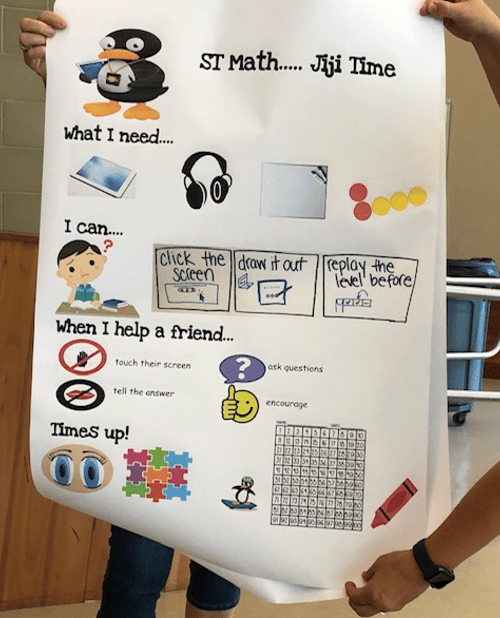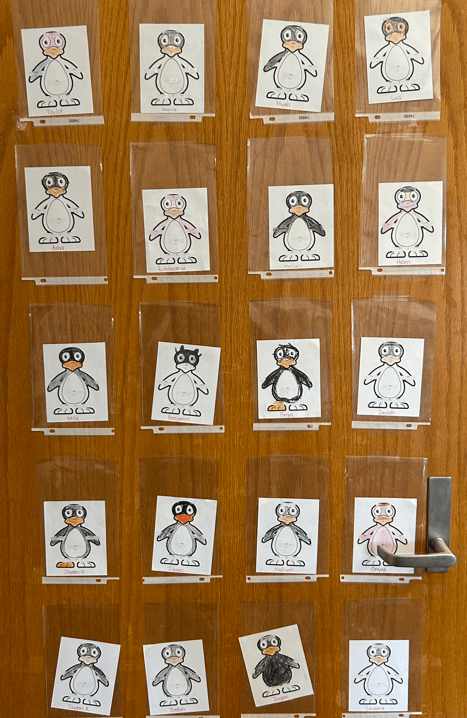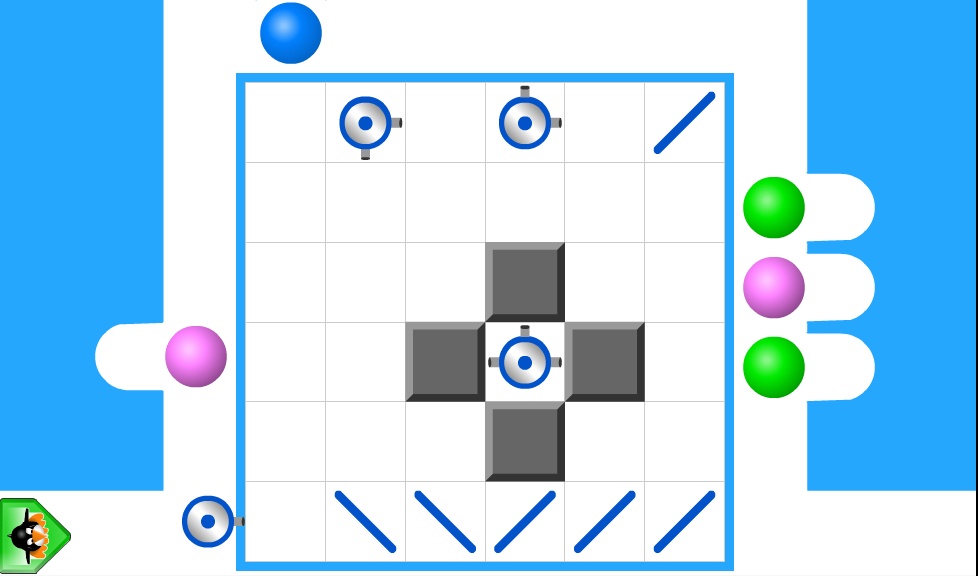Adopting a new instructional program, and committing to getting the greatest benefit from it, can be challenging. Studies show that progress through the ST Math Journey is correlated with increased achievement on standardized tests and greater self-confidence for all students. Still, it’s not always easy to determine how to best optimize your school’s use of the program.
If you’re an ST Math Champion experiencing a roadblock to stronger ST Math implementation, you’re not alone—and you don’t have to find solutions all by yourself, either. Many school leaders and champions have been where you are and have leveraged their creativity plus the collective knowledge of our ST Math Massachusetts community to bring their students’ learning with ST Math to the next level.
Schools around Massachusetts are leveraging creativity and community collaboration to make great gains in ST Math progress and student achievement & confidence.
Here are some tips from a few of ST Math Massachusetts’ most-improved schools that will help you create systems that focus on high-leverage moves to maximize your students’ learning, whether you’re just starting with ST Math or ready to take your school’s work with JiJi to the next level.
Set Expectations for Teachers and Students From Day 1
As any teacher knows, the best way to set up an activity for success is to have clear expectations from the outset.
For ST Math teachers, this means ensuring that teachers have ST Math in the schedule for the recommended amount of time each week (60 minutes for grades K-1 and 90 minutes for grades 2 and above). Whether your school chooses to have uniform ST Math time across the school or each teacher is given the agency to build in time where it works in their classroom, building ST Math time into the schedule will ensure students have enough time to progress through their journeys and build a strong foundation in mathematics.
For ST Math students, this means knowing the expectations of how to access and interact with the program so they can be efficient with their ST Math time. Having an anchor chart, slide, or other visual to display during ST Math time will also build student self-efficacy.

One example of an anchor chart, from Douglas Primary School in Douglas, MA.
At Mountain View Elementary in East Longmeadow, Massachusetts, teacher culture was key, says math coach Sara Scibelli. The administrative team set the tone at the beginning of the school year by providing professional development to staff, setting usage expectations (and celebrating when classrooms met them), and emphasizing the influence of teacher mindset on student attitudes. Mountain View’s average puzzle goal completion grew from 32% to 79% over just one school year.
Use Data to Inform Instruction and Use of ST Math Time
Other schools, like Frost Elementary in Lawrence, Massachusetts, use regular, shared conversations around data to focus their next steps. Ashley Bibbo and Crissy Sakowich communicate regularly with teachers about whether or not they’re on track to meet their ST Math goals. Their school’s usage grew from 38% to 80% last year, in part due to this regular dialogue.
The ST Math Dashboard makes a variety of different data points available to teachers and Champions, and this information can be used to form student groupings, decide who to pull for one-on-one help, and plan focused conferences with students. One great way to build investment and share strategies among teachers is to have regular conversations about the teacher dashboard. From these discussions, teachers can create (and later follow up on) action plans for supporting students right where they need it.
Build Student Investment With Tracking and Challenges
Many teachers and Champions have found it useful to combine clear expectations with data reflections to create individual, class-wide, and school-wide trackers. This is a fun, visual way to increase investment and instill some friendly competition among classrooms while also encouraging students to challenge themselves individually.
Teachers at Fisher Hill Elementary in Orange, Massachusetts, credit trackers with keeping teachers and students focused on learning with ST Math. Teachers Glenn Mitchell and Emily DeCarolis, along with math coach, Jennifer Rich, say that having individual and classroom trackers was a game changer that allowed the school to help students set goals and celebrate their successes, ultimately leading them to improve from 45% to 92%.

A teacher at Bailey Elementary School in Lowell, MA uses a JiJi tracker for students to see their progress and reflect on their learning. Find many more creative ideas at our ST Math Help site.
If Andrew Tuccio had one piece of advice for principals looking to get the most out of ST Math, it would be to “celebrate the kids,” says the principal of Shaw Elementary in Millbury, Massachusetts. He and his staff focused the year on establishing and celebrating JiJi culture, from throwing hot cocoa parties to sending a JiJi puppet to the classroom in each grade that made the most weekly progress. Embedding ST Math into daily life at Shaw made a big difference, he said, and contributed to their growth from 36% to 80% puzzle goal progress in the 2022-23 school year.
Small Steps Lead to Big Leaps
Making sure students have sufficient time and access to use ST Math, ensuring teachers are well-trained in using the program and analyzing the data that comes out of it, and creating buy-in can seem overwhelming. But you don’t have to do everything at once. In fact, growth is only sustainable if it’s thoughtful, deliberate, and makes sense for your school.
Which of these strategies will you choose for your school to be sure your students and teachers are prepared for a successful year with ST Math?



